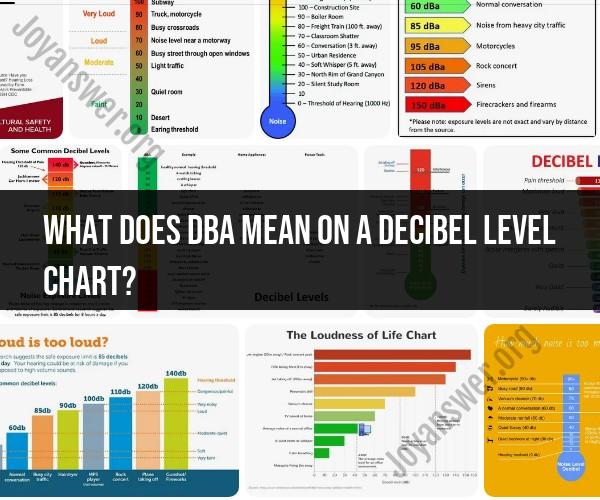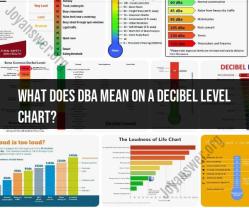What does DBA mean on a decibel level chart?
"DBA" on a decibel level chart refers to "A-weighted decibels," which are a unit of measurement used to represent sound levels that are adjusted for the human ear's sensitivity to different frequencies. The "A-weighting" is a specific filter that mimics the way the human ear perceives sound and is commonly used in noise measurement and environmental noise assessments to provide a more accurate representation of the impact of noise on human hearing.
Here's what "DBA" means in the context of a decibel level chart:
Decibels (dB): The decibel is a logarithmic unit used to express the intensity or level of sound. It is a relative measure that compares the sound pressure level to a reference point, often the quietest sound that the human ear can detect.
A-weighting (A-filter): The A-weighting is a frequency response filter that reduces the influence of low and high-frequency components in a sound signal. It gives more weight to mid-frequency sounds, which are closer to the frequencies that the human ear is most sensitive to. This adjustment is necessary because human hearing is not equally sensitive to all frequencies, and we hear mid-range frequencies more prominently.
DBA (A-weighted decibels): When you see "DBA" on a decibel level chart, it indicates that the decibel values displayed have been adjusted using the A-weighting filter to account for the frequency sensitivity of the human ear. DBA values are typically used to represent the "equivalent continuous noise level" or "L_Aeq" over a specific period, often in one-hour or eight-hour measurements. This means the sound levels have been modified to more accurately reflect the perceived loudness of noise to the human ear.
For example, if you have a noise measurement expressed as "80 dBA," it means that the noise level has been adjusted using the A-weighting filter to account for how the human ear perceives sound. It's a more relevant measure for assessing the potential impact of noise on human health and comfort.
DBA values are commonly used in environmental noise assessments, workplace safety, and various regulatory standards for noise pollution. They help ensure that sound measurements take into account the way humans hear and react to noise, making them more suitable for evaluating the potential effects of noise exposure on human health and well-being.
What does "DBA" signify on a decibel level chart or measurement?
DBA on a decibel level chart or measurement stands for decibels A-weighted. This is a unit of measurement for noise levels that is designed to approximate the way that humans perceive sound. The A-weighting filter used in DBA measurements takes into account the fact that humans are less sensitive to low-frequency sounds and more sensitive to high-frequency sounds.
How is "DBA" used in the context of decibel scales and noise measurement?
DBA is the most commonly used unit of measurement for noise levels. It is used in a variety of contexts, including:
- Occupational safety and health: DBA is used to measure noise levels in workplaces to ensure that they are safe for workers.
- Environmental protection: DBA is used to measure noise levels in the environment to protect people and wildlife from noise pollution.
- Product safety: DBA is used to measure noise levels from products, such as appliances and power tools, to ensure that they are safe for consumers.
What is the significance of the "A-weighted" filter in sound level assessments?
The A-weighted filter is used in sound level assessments because it is designed to approximate the way that humans perceive sound. This means that DBA measurements are more accurate for assessing the potential impact of noise on people than unweighted decibel measurements.
Here are some examples of how DBA is used in the real world:
- Occupational safety and health regulations often specify noise exposure limits in DBA. For example, the Occupational Safety and Health Administration (OSHA) in the United States has a noise exposure limit of 90 DBA for an 8-hour workday.
- Environmental protection agencies often use DBA to measure noise levels from aircraft, traffic, and other sources of noise pollution. This information can be used to develop noise mitigation strategies.
- Product safety regulations often specify noise emission limits in DBA. For example, the European Union has a noise emission limit of 80 DBA for lawnmowers.
DBA is a valuable tool for assessing noise levels and protecting people from noise pollution.


